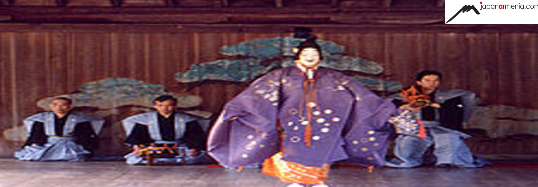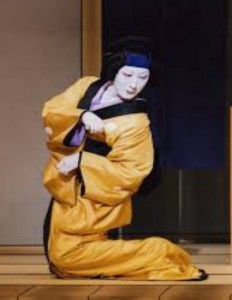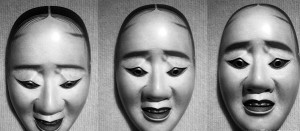
Japanese Theater Noh (video)
The borderline of the Japanese theater, which goes to extremes, begins with the tragic plays and ends with the performances of the colorful world of puppet, that have theatrical shading. The oldest one from the local theaters is the theater Noh. It has originated in the 14th century. It is a musical-dancing drama, which has originated with the help of men’s choir, pipe and two-three drums. Performances mainly consist of three plays, each of them lasts for thirty minutes. They are mainly dramatic shadings of phenomena concerning the Japanese, legends based on the history and myths.
Today in the playlist of the Noh theater there are more than 240 theatrical performances, which were staged in the 15th century. The latter are divided into five groups: about gods, about men and war, about women, madmen and monsters. The performance takes place without any decorations. The main characters appear during the performance without make-up and theatrical clothes. The choir and orchestra stand in special places. The actions of mysterious and slow characters are replaced by energetic and enthusiastic gestures, which express the relations, feelings and emotional experience of the character. All this is accompanied by the music of the orchestra, which consists of eight men.
The performance mainly consists of quite long monologues and dances. In its format, it does not have anything in common with the European theater. Here the characters recite or sing.
For a person, who is not familiar with the Japanese theater it may seem incomprehensible and in some way boring, but this art has a unique magnetic power. By penetrating into it you can enjoy and admire the variety of colors and characters.
In all plays there are two acting characters: “site” – the main hero and “vaki” his assistant. The main character appears on the stage and begins the story. The whole performance is a special play based on gestures and voice, which creates an atmosphere full of wonderful feelings.

The key part of the Japanese theater makes the dancing ensemble. Being in the theater at first sight it may seem that the actors are monotonous, categorical and in some way a little bit boring, but in a very short time without any acrobatic exercises, due to their great mastery the actors manage to prove the contrary. They transport you into another atmosphere, where the secrets of the Japanese theater are revealed. By penetrating into the spirit of the latter, you are able to catch the essence of the unique dance, flooded with theatrical exercises. Each movement of the latter has a separate form and is called “kata”, which is characteristic of only the Japanese theater.
There are many theatrical modes. During one of them, the leg of the actor must not be rushed from the stage. The general number of “katas” is nearly twenty, but nowadays only thirteen of them are used in the theater. Each of them has its own name.
The main peculiarity of the theater is that each thing is presented directly by the actor without any additional decorations. For example, coat can be presented in the following way: the actor freezes, hangs his head a little and touches his forehead with the left hand.
 Masks are the integral part of the Noh theater. They differ in age and gender: an old man, an old woman, a young boy or a girl. The latter appear with the image masks characteristic of the performance: a woman – beautiful, ugly, a man – a demon, a monster, a nobleman, a soldier.
Masks are the integral part of the Noh theater. They differ in age and gender: an old man, an old woman, a young boy or a girl. The latter appear with the image masks characteristic of the performance: a woman – beautiful, ugly, a man – a demon, a monster, a nobleman, a soldier.
The classification of masks is distinct. Their number exceeds twenty. The wonderful ability of the latter is the expression of different emotions. By changing the position of the head, the actor creates such an impression as if the mask has changed its expression.
The performances of the Noh theater take place in a covered square stage, which is closed from three sides and is based on four columns. There are no decorations in the theater. On the left side, there are pictures available for the audience and the announcer. Nowadays also, the Noh theater continues to present in art a specific and unique way of theater.
Prepared by Christine Araqelyan
the material is taken from http://ostarmenia.com/hy/cinema-theatre-arm/japanece-theatre-no/
translated from Armenian into English by M.Vardanyan










